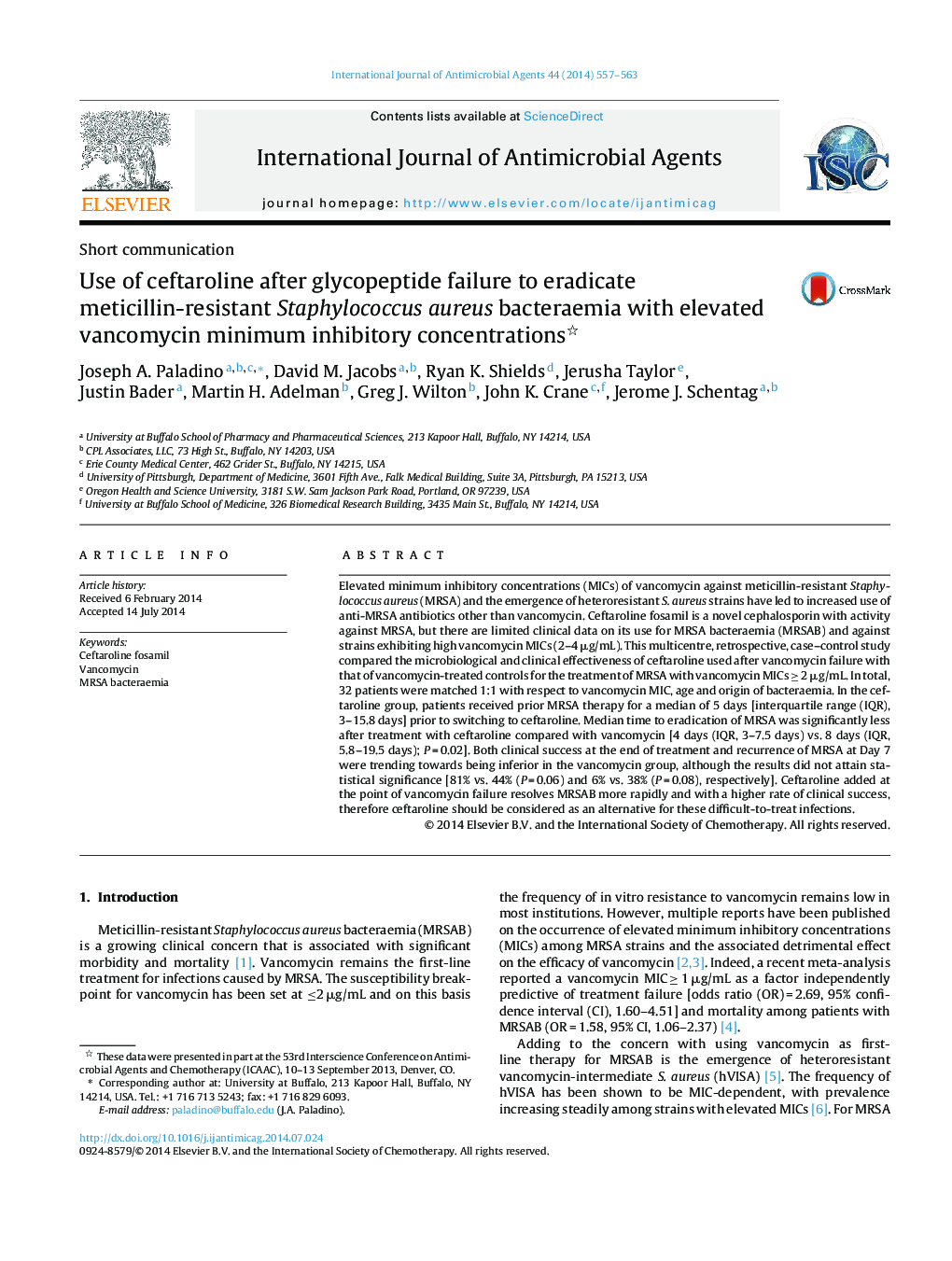| کد مقاله | کد نشریه | سال انتشار | مقاله انگلیسی | نسخه تمام متن |
|---|---|---|---|---|
| 3358775 | 1591774 | 2014 | 7 صفحه PDF | دانلود رایگان |
• Thirty-two patients were matched 1:1 with respect to vancomycin MIC, age and origin of bacteraemia.
• Time to eradication of MRSA was significantly less after treatment with ceftaroline compared to vancomycin (4 days vs. 8 days, P = 0.02).
• Clinical success and recurrence of MRSA at day 7 were trending towards being inferior in the vancomycin group, although the results did not attain statistical significance.
• Ceftaroline added at the point of vancomycin failure resolves MRSA bacteraemia more rapidly and with a higher rate of clinical success.
Elevated minimum inhibitory concentrations (MICs) of vancomycin against meticillin-resistant Staphylococcus aureus (MRSA) and the emergence of heteroresistant S. aureus strains have led to increased use of anti-MRSA antibiotics other than vancomycin. Ceftaroline fosamil is a novel cephalosporin with activity against MRSA, but there are limited clinical data on its use for MRSA bacteraemia (MRSAB) and against strains exhibiting high vancomycin MICs (2–4 μg/mL). This multicentre, retrospective, case–control study compared the microbiological and clinical effectiveness of ceftaroline used after vancomycin failure with that of vancomycin-treated controls for the treatment of MRSA with vancomycin MICs ≥ 2 μg/mL. In total, 32 patients were matched 1:1 with respect to vancomycin MIC, age and origin of bacteraemia. In the ceftaroline group, patients received prior MRSA therapy for a median of 5 days [interquartile range (IQR), 3–15.8 days] prior to switching to ceftaroline. Median time to eradication of MRSA was significantly less after treatment with ceftaroline compared with vancomycin [4 days (IQR, 3–7.5 days) vs. 8 days (IQR, 5.8–19.5 days); P = 0.02]. Both clinical success at the end of treatment and recurrence of MRSA at Day 7 were trending towards being inferior in the vancomycin group, although the results did not attain statistical significance [81% vs. 44% (P = 0.06) and 6% vs. 38% (P = 0.08), respectively]. Ceftaroline added at the point of vancomycin failure resolves MRSAB more rapidly and with a higher rate of clinical success, therefore ceftaroline should be considered as an alternative for these difficult-to-treat infections.
Journal: International Journal of Antimicrobial Agents - Volume 44, Issue 6, December 2014, Pages 557–563
